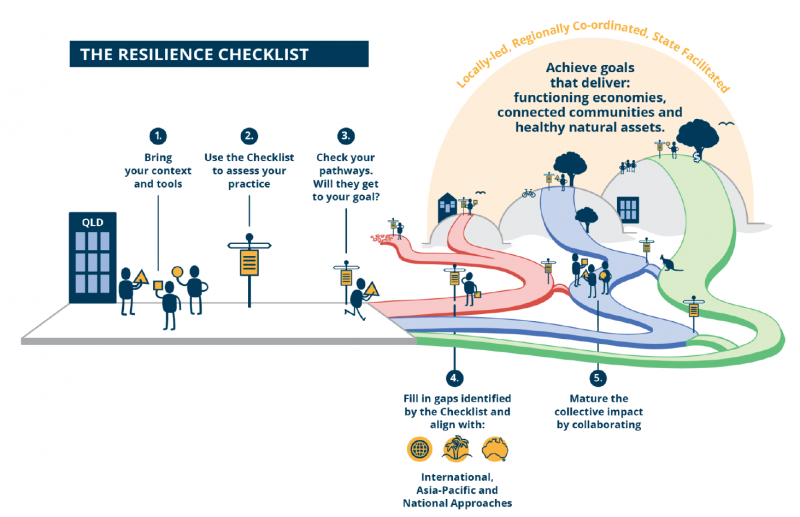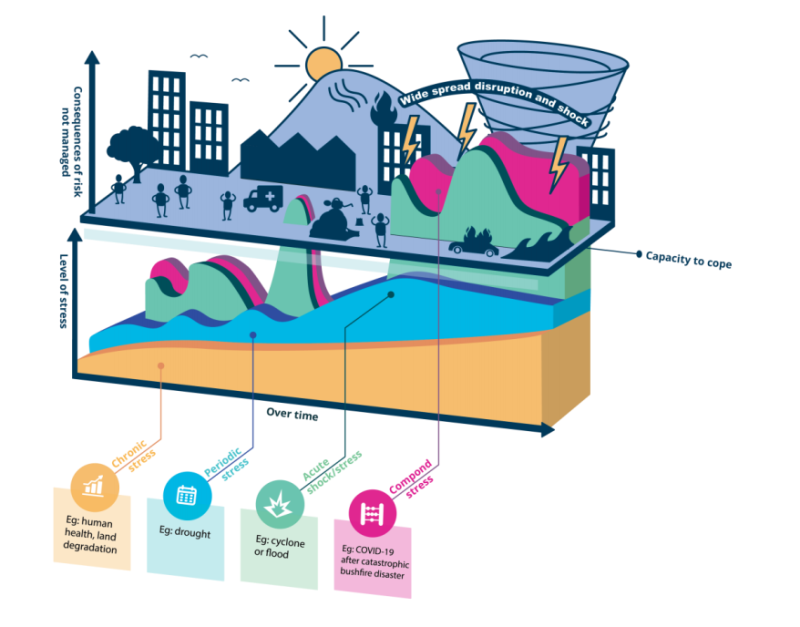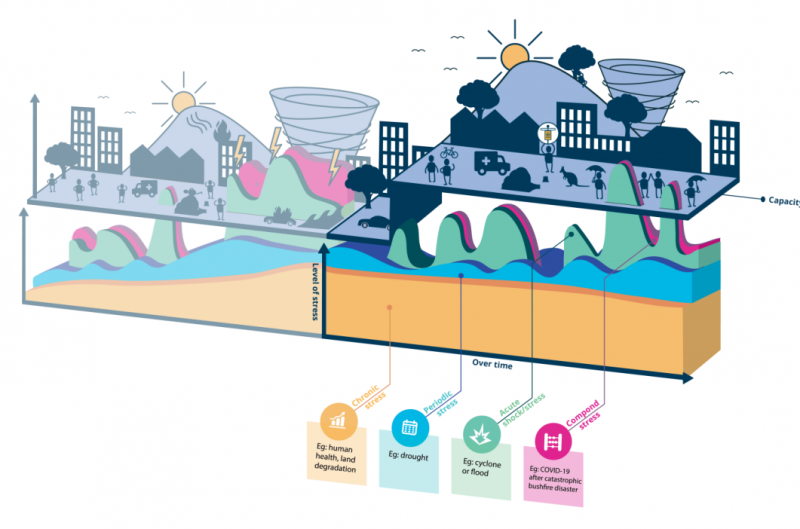The Queensland Resilience, Adaptation Pathways and Transformation Approach project (QRAPTA)
The frequency and scale of natural disasters are increasing. This, combined with chronic and periodic stressors, can compound communities’ vulnerability to natural disasters.
The Queensland Strategy for Disaster Resilience (QSDR) and its implementation plan, Resilient Queensland 2018–21 – Delivering the Queensland Strategy for Disaster Resilience, provide a framework to empower Queenslanders to factor in resilience measures and activities as they anticipate, respond and adapt to changing circumstances.
QRA engaged CSIRO to expand on the insights garnered from Resilient Queensland’s engagement with local governments and state agencies. In late 2019, CSIRO conducted interviews and workshops with state agency stakeholders to gather views and experiences relating to resilience.
QRAPTA recognises that many agencies’ activities, irrespective of their particular portfolio responsibilities, already contribute to resilience. The QRAPTA project provides a process to harmonise these resilience activities across agencies and sectors.
Narratives to harmonise resilience building
Establishing a shared language, shared goals and shared understanding is critical to coordinating agencies’ efforts to build resilience. CSIRO has designed four ‘narratives’ to help talk about the complex systems that need to be understood by decision-makers in a common way:
Narrative 1 – Becoming more resilient
- Chronic, periodic and acute stresses combine and amplify to create systemic risk, leading to the potential for catastrophic disaster. Changing roles, responsibilities and approaches to managing chronic, periodic and systemic risk will lower risk, and increase capacity to cope.
Narrative 2 – Thinking in systems, not silos
- A systems approach is needed – understanding cause and effect, points of leverage, and three pathways (‘Doing the same’, ‘Doing better’ and ‘Doing differently’) to create futures that are disaster-resilient and adaptive to change.
Narrative 3 – Pathways to effect change
- A resilience checklist has been developed. This enables agencies to assess whether their existing processes are effective and whether existing initiatives can be better aligned for collective impact. It can be used by agencies at any level of risk reduction maturity. It also has the potential to be used systemically to underpin a collaborative approach to governance across all agencies and sectors, including those not traditionally in the ‘disaster risk’ or ‘disaster response’ business.
Narrative 4 – Changing our practices
- The Resilience Checklist can complement the creation of new ways of interacting and governance mechanisms for co-ordinating State government service delivery.
Key documents




Resilience checklist
By using the Resilience Checklist, individual organisations can check their own approaches and contribute to collaboration and collective action to build resilience to reach common goals.
Next steps
QRA will promote the QRAPTA project and accompanying documents and tools through the Queensland Resilience Coordination Committee, which is made up of key service delivery agencies in Queensland Government. QRA encourages State agencies to assess the documents and tools produced in this work to assess the QRAPTA approach.


